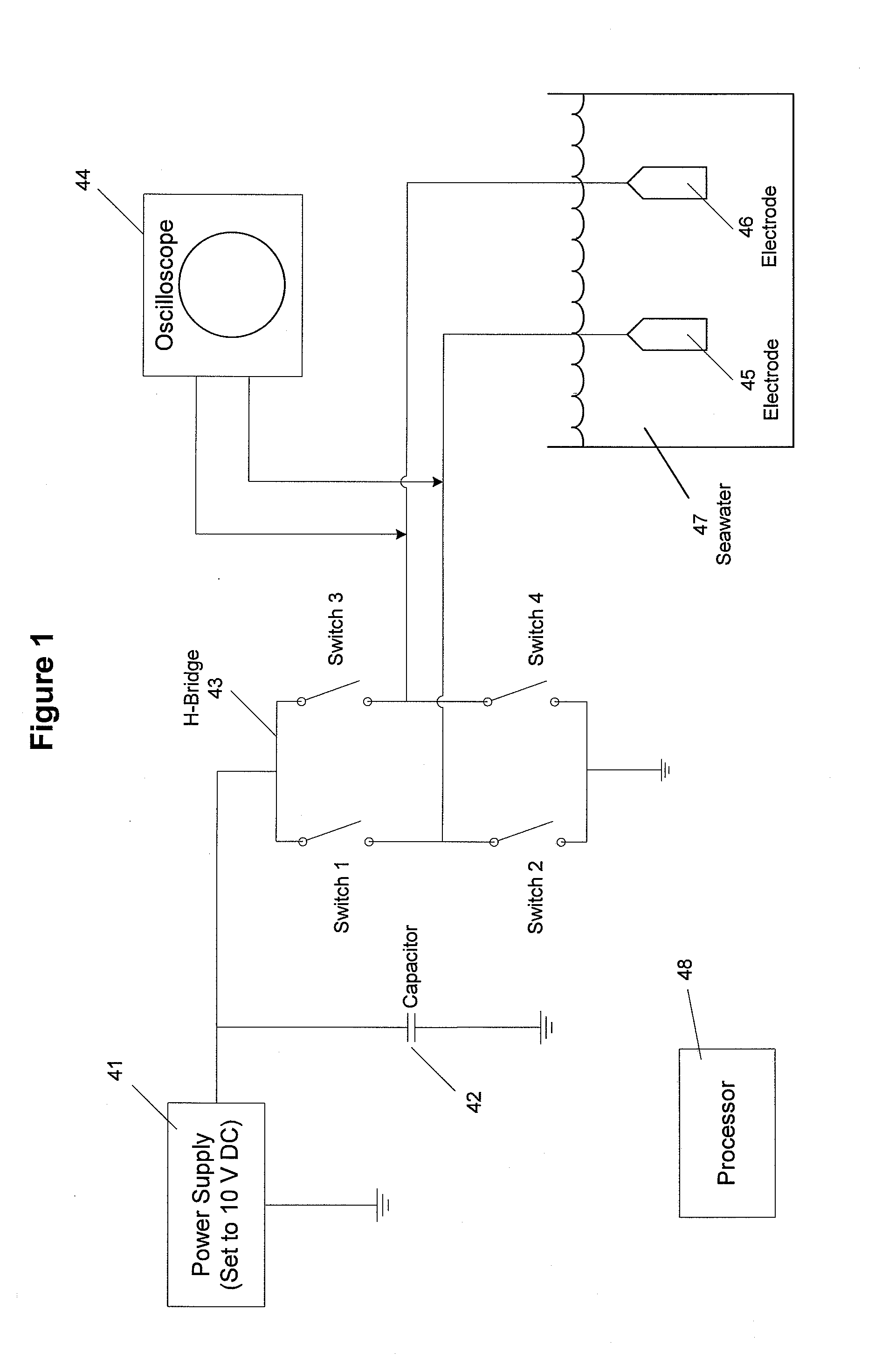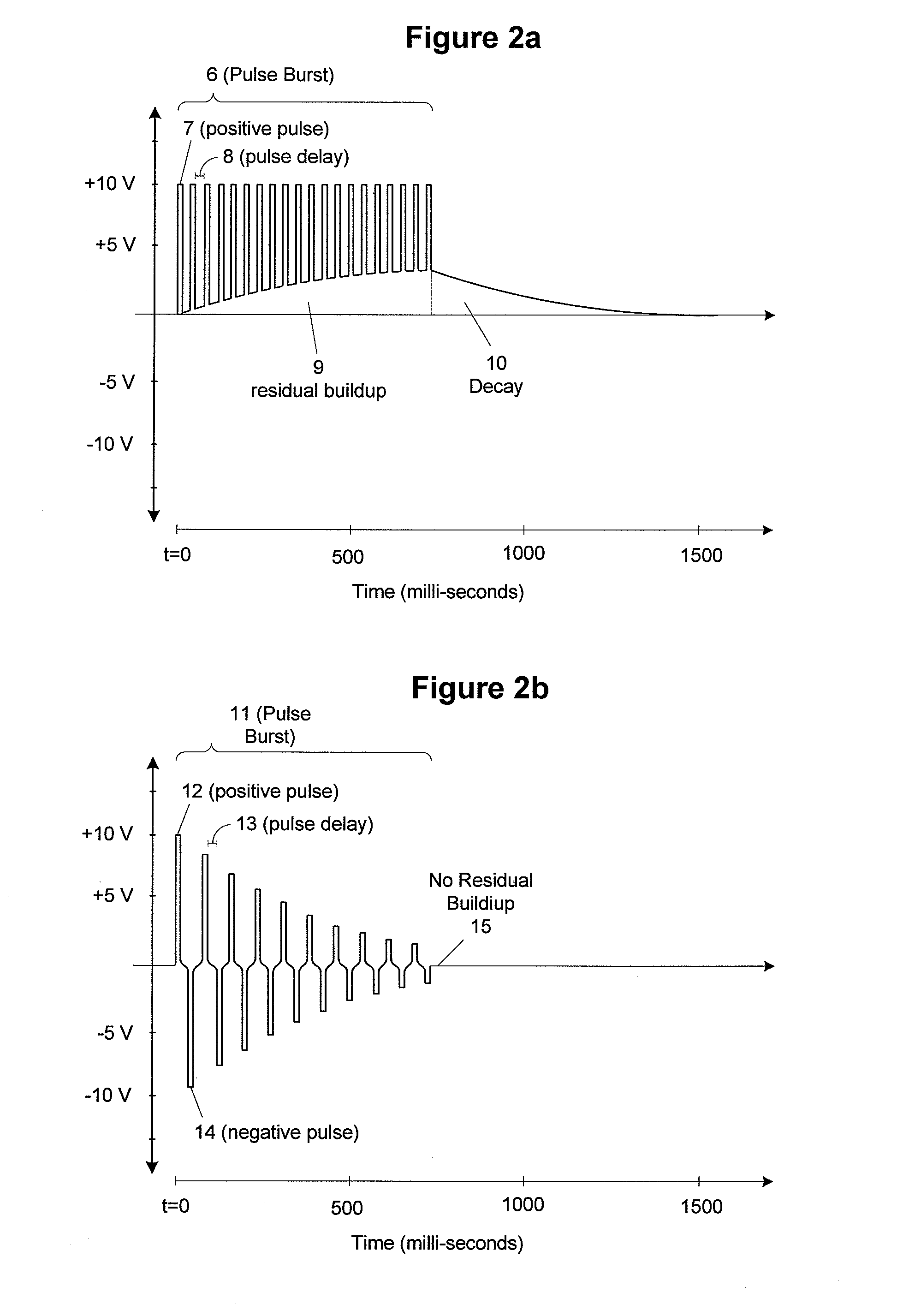High efficacy signal format & thin-profile ankle-mounting for electronic shark deterrent
a shark deterrent and signal format technology, applied in the field of electronic shark deterrents, can solve the problems of limiting the effective range and efficiency of such devices, irritation or even death, and theorizing negatively affecting the sensory organs of the nervous system by electric fields, so as to improve deterrence, improve physical structure, and high efficiency
- Summary
- Abstract
- Description
- Claims
- Application Information
AI Technical Summary
Benefits of technology
Problems solved by technology
Method used
Image
Examples
Embodiment Construction
[0042]As previously disclosed in U.S. patent application Ser. No. 12 / 238,185, filed on Sep. 25, 2008, an electronic shark deterrent device can deter sharks from remaining in proximity to a person or area of human activity by producing a high-voltage output waveform from a pair of electrodes, wherein the output waveform comprises a train of bursts of high-voltage electronic pulses of pulse width in the range of 20 μs to 100 μs and having a burst duration of one-half to two-and-one-half seconds followed by a rest interval and repeated at regular intervals.
[0043]As a first aspect of the present invention, an improved high-efficacy output waveform for an electronic shark deterrent device comprises high-voltage pulse bursts made up of a series of alternating-polarity pulses. By using pulses of alternating polarity, the tendency of ion migration to and buildup on the device electrodes is significantly reduced or eliminated, thereby maintaining the efficacy of the device output to deter sh...
PUM
 Login to View More
Login to View More Abstract
Description
Claims
Application Information
 Login to View More
Login to View More - R&D
- Intellectual Property
- Life Sciences
- Materials
- Tech Scout
- Unparalleled Data Quality
- Higher Quality Content
- 60% Fewer Hallucinations
Browse by: Latest US Patents, China's latest patents, Technical Efficacy Thesaurus, Application Domain, Technology Topic, Popular Technical Reports.
© 2025 PatSnap. All rights reserved.Legal|Privacy policy|Modern Slavery Act Transparency Statement|Sitemap|About US| Contact US: help@patsnap.com



